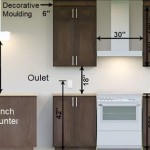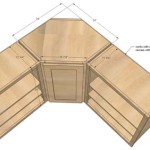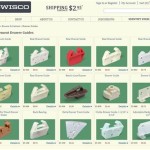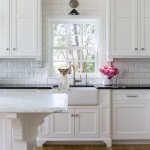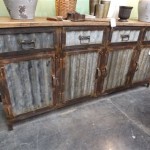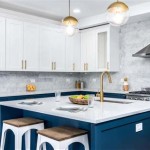What Types of Kitchen Cabinets Are Not Suitable for Painting?
Painting kitchen cabinets is a cost-effective way to refresh the look of a kitchen without undertaking a full remodel. However, not all cabinet materials and finishes are conducive to painting. Understanding which types of cabinets are poor candidates for painting is crucial to avoid wasted time, effort, and resources, and to ensure a satisfactory and long-lasting outcome. Successfully painting kitchen cabinets relies heavily on proper preparation, priming, and painting techniques, but these factors are less effective when the underlying material or existing finish presents inherent challenges.
Certain cabinet materials possess characteristics that make it difficult for paint to adhere correctly or to maintain a durable finish. Similarly, some factory finishes are designed to be highly resistant to damage and wear, inadvertently creating a surface that is also resistant to paint adhesion. Identifying these unsuitable materials and finishes is the first step in determining the feasibility of a cabinet painting project.
Thermofoil Cabinets and the Delamination Risk
Thermofoil cabinets, also known as wrapped cabinets, are constructed from a substrate, typically MDF (Medium-Density Fiberboard), covered with a thin layer of vinyl. This vinyl is heated and vacuum-pressed onto the MDF, creating a seamless and durable surface. While thermofoil offers a smooth and easy-to-clean finish, it poses significant challenges when it comes to painting. The primary obstacle is the risk of delamination.
Delamination refers to the separation of the thermofoil layer from the MDF core. This can occur due to several factors, including age, heat exposure (from ovens or dishwashers), and moisture. When the thermofoil begins to peel or bubble, painting becomes considerably more difficult, if not impossible. Paint will not adhere properly to a delaminating surface, and any attempt to paint over loose thermofoil will likely result in further peeling and an uneven, unsightly finish.
Even if the thermofoil layer appears to be intact, the inherent smoothness of the vinyl surface presents an adhesion challenge. Paint struggles to grip the slick surface, leading to potential chipping, peeling, and scratching. While specialized primers designed for difficult-to-bond surfaces can improve adhesion, the risk of future delamination remains a significant concern. Removing the thermofoil entirely is an option, but this is a labor-intensive process that often damages the underlying MDF, requiring extensive repairs before painting can commence.
The success of painting thermofoil cabinets largely depends on the condition of the thermofoil. If the thermofoil is already showing signs of wear or delamination, painting is generally not recommended. The cost and effort involved in preparing the cabinets and mitigating the risk of further damage often outweigh the benefits of painting. In such cases, refacing or replacing the cabinets may be a more practical and cost-effective solution.
Laminate Cabinets and Adhesion Problems
Laminate cabinets, similar to thermofoil, feature a synthetic surface adhered to a substrate, often particleboard or MDF. However, laminate is typically a thicker and more rigid material compared to thermofoil. While more durable than thermofoil in some respects, laminate also presents adhesion challenges when painting.
The smooth, non-porous surface of laminate makes it difficult for paint to bond effectively. Standard primers often fail to provide sufficient grip, leading to paint chipping, peeling, and scratching over time. The key to painting laminate cabinets lies in rigorous surface preparation and the use of specialized primers designed for bonding to non-porous surfaces.
Sanding the laminate surface is crucial to create a slightly rougher texture that paint can adhere to. However, over-sanding can damage the laminate and expose the underlying substrate, which can then absorb moisture and swell. A fine-grit sandpaper should be used with caution, and the sanding process should be followed by thorough cleaning to remove any dust or debris.
The selection of the correct primer is paramount. Adhesion-promoting primers, often containing acrylic or epoxy resins, are formulated to bond to slick surfaces and provide a stable base for paint. Multiple coats of primer may be necessary to ensure adequate adhesion, and each coat should be allowed to dry completely before applying the next.
Despite careful preparation and the use of specialized primers, painting laminate cabinets still carries a higher risk of failure compared to painting solid wood cabinets. The durability of the paint finish is highly dependent on the quality of the primer and paint, as well as the level of wear and tear the cabinets are subjected to. If the laminate is already damaged or showing signs of wear, painting may not be the best option.
Cabinets with Factory-Applied Conversion Varnish or Lacquer Finishes
Many high-end kitchen cabinets are finished with conversion varnish or lacquer, providing a durable and chemically resistant surface. While these finishes offer excellent protection against scratches, stains, and moisture, they can also be difficult to paint over. The reason lies in the inherent properties of these finishes, which are designed to be highly inert and resistant to bonding with other materials.
Conversion varnish and lacquer finishes are typically applied in multiple layers, creating a hard, smooth surface that is difficult for paint to penetrate. Standard primers often struggle to adhere to these finishes, leading to paint chipping and peeling. The key to successfully painting cabinets with these finishes lies in thorough surface preparation and the use of specialized bonding primers.
Surface preparation involves degreasing and sanding the existing finish to create a slightly rougher texture. A degreaser is essential to remove any grease, oil, or wax that may be present on the surface. Sanding helps to scuff the finish, providing a mechanical key for the primer to grip onto. However, it's important to avoid sanding too aggressively, as this can damage the underlying wood or veneer.
Bonding primers, formulated with strong adhesion promoters, are specifically designed to bond to difficult-to-paint surfaces like conversion varnish and lacquer. These primers often contain acrylic or epoxy resins that create a strong and durable bond. Multiple coats of primer may be necessary to ensure adequate adhesion, and each coat should be allowed to dry completely before applying the next. It is crucial to follow the manufacturer's instructions carefully when applying these primers.
Even with careful preparation and the use of specialized primers, painting cabinets with factory-applied conversion varnish or lacquer finishes can be challenging. The adhesion of the paint is highly dependent on the quality of the primer and the thoroughness of the surface preparation. In some cases, professional refinishing may be a more reliable option, as it involves stripping the existing finish and applying a new finish that is specifically designed to bond to the cabinet material.
In summary, while painting kitchen cabinets can be a worthwhile endeavor, understanding the limitations posed by certain materials and finishes is critical for achieving a successful outcome. Thermofoil, laminate, and cabinets with durable factory finishes present unique challenges that require careful consideration and specialized techniques. Assessing the condition of the existing finish and the long-term durability of the painted surface is crucial in deciding whether painting is the most appropriate course of action. Consulting with a professional painter can provide valuable insights and help determine the best approach for a given project.

Avoid These Mistakes How To Paint Cabinets That Are Already Painted Grace In My Space

Farmhouse Check In A What We Chose Edition Stained Wood Or Painted Cabinets Emily Henderson

Cabinet Painting Most Common Concerns Textbook

Black Kitchen Cabinets The Ugly Truth At Home With Barkers

How To Paint Kitchen Cabinets Without Sanding Or Priming

Mimi Vanderhaven Cabinets With A Factory Finish That The Average

My Painted Cabinets Two Years Later The Good Bad Ugly

Ultimate Guide To Painting Cabinets Bbfrosch

How To Paint Laminate Kitchen Cabinets Perfect Finish Tips

The Best Way To Paint Kitchen Cabinets No Sanding Palette Muse
Related Posts

